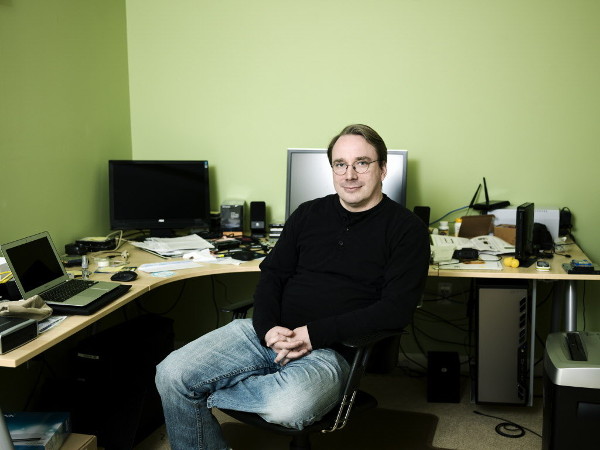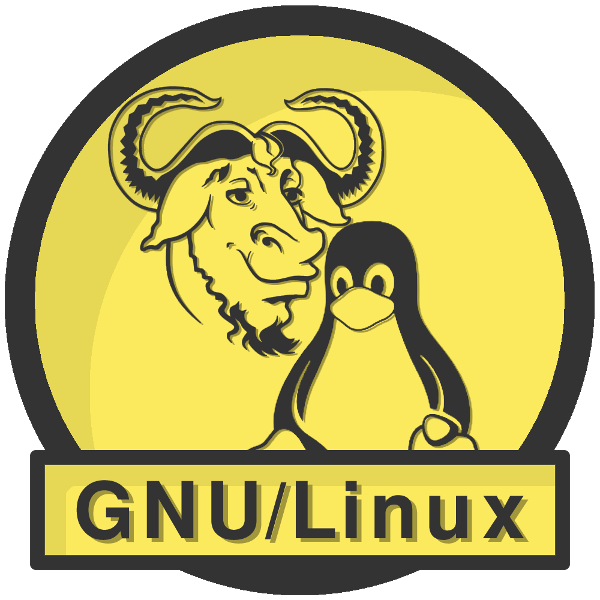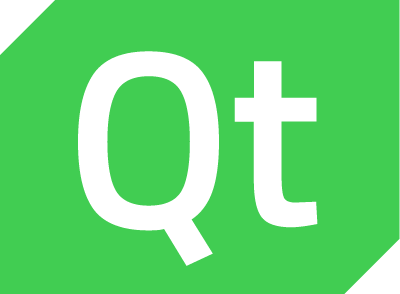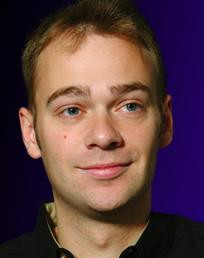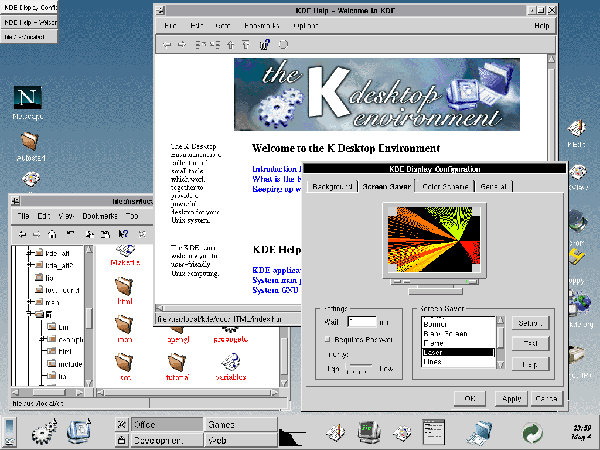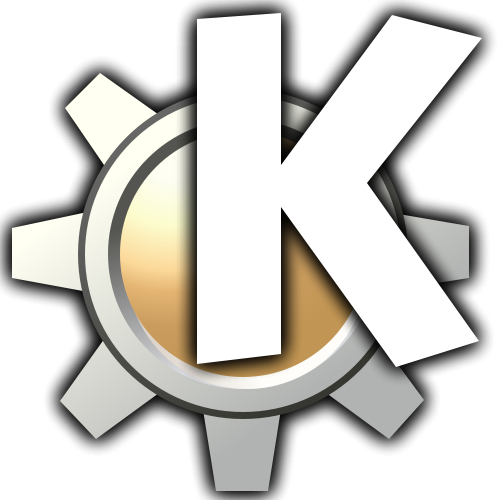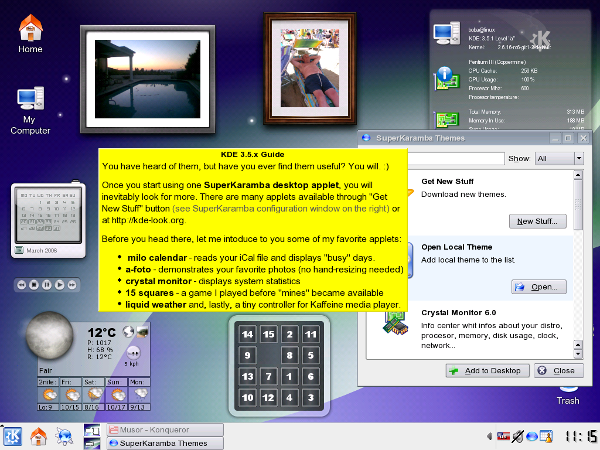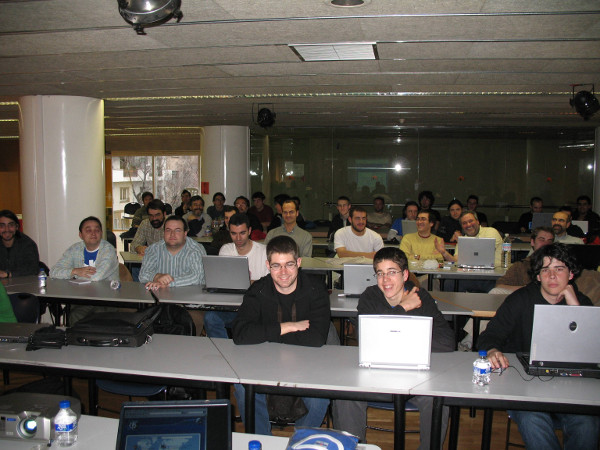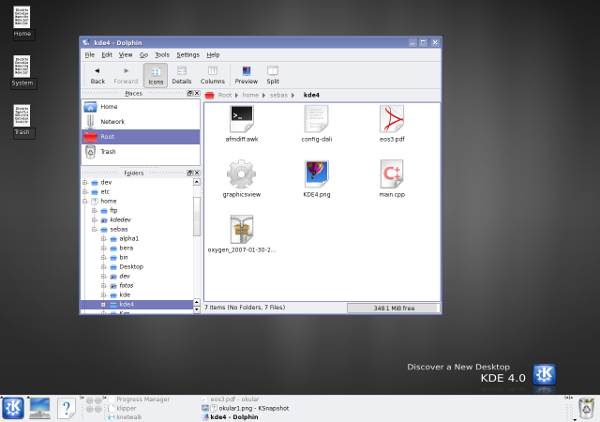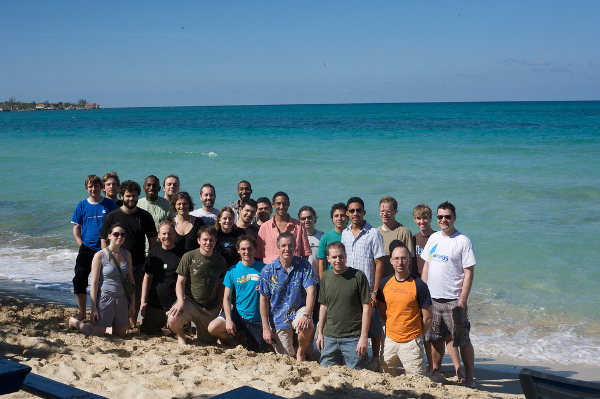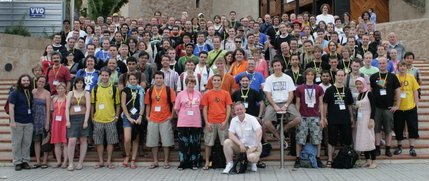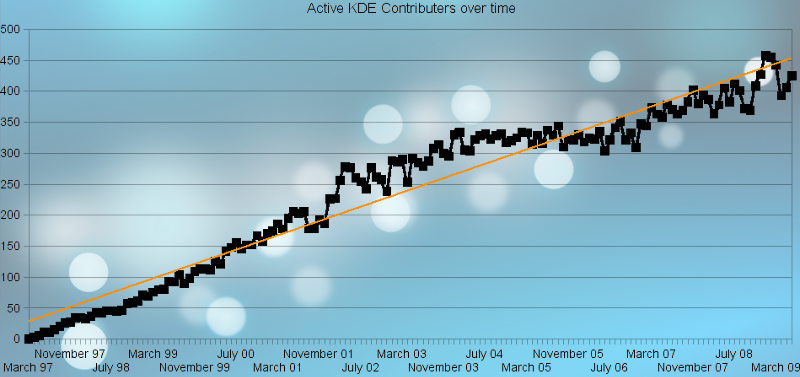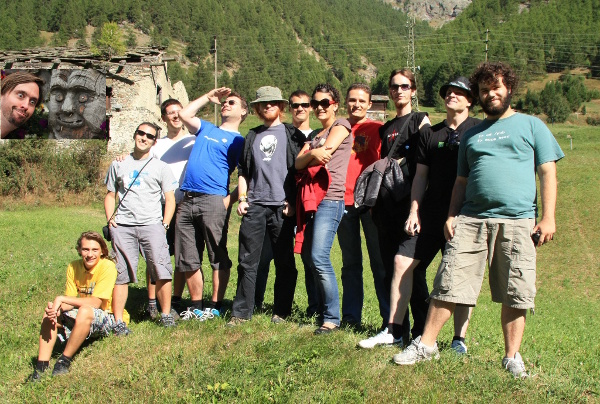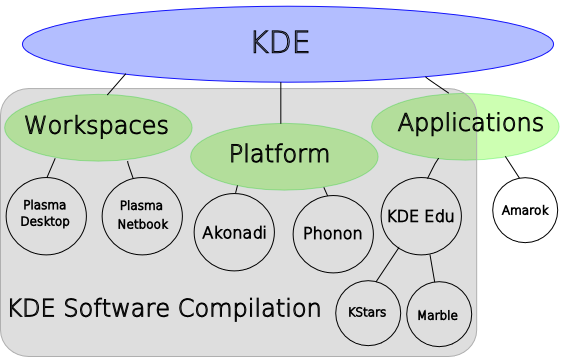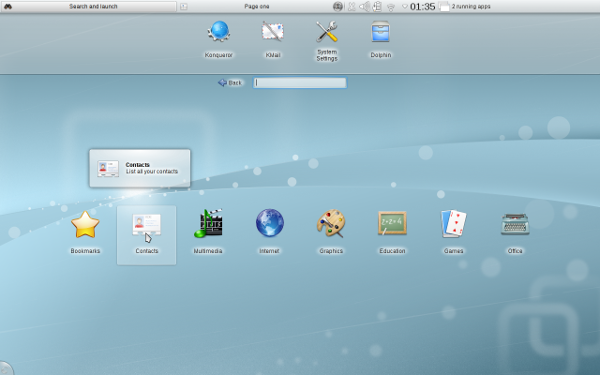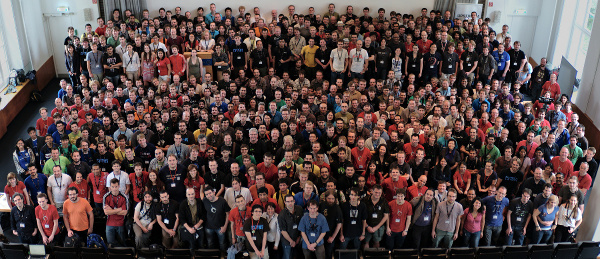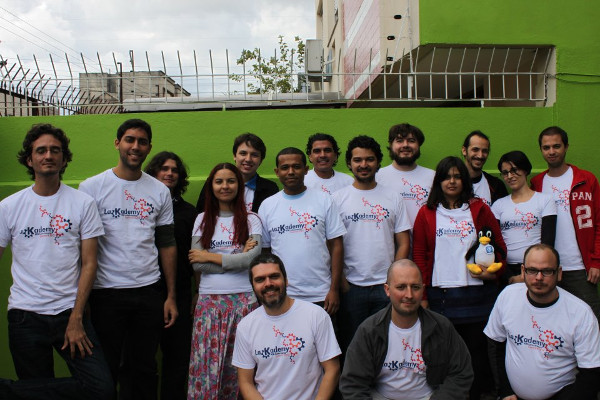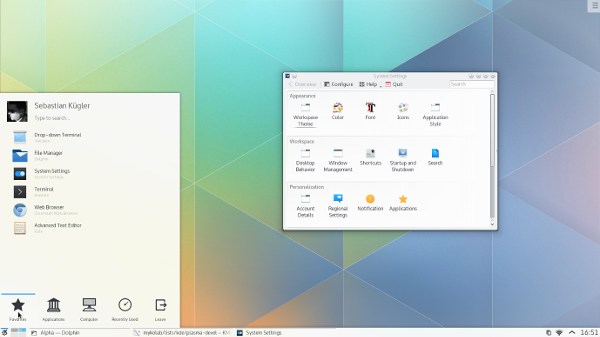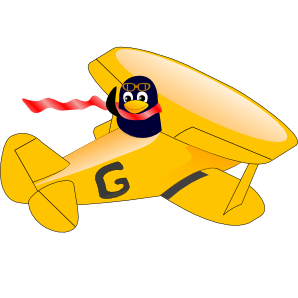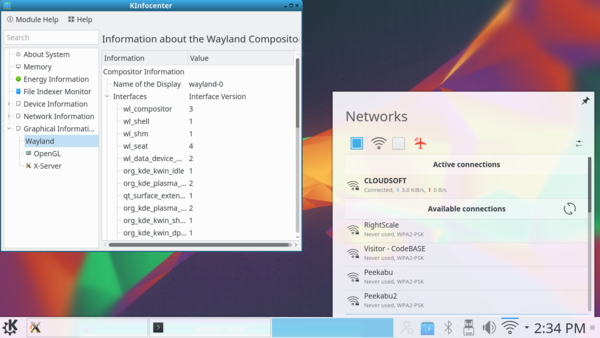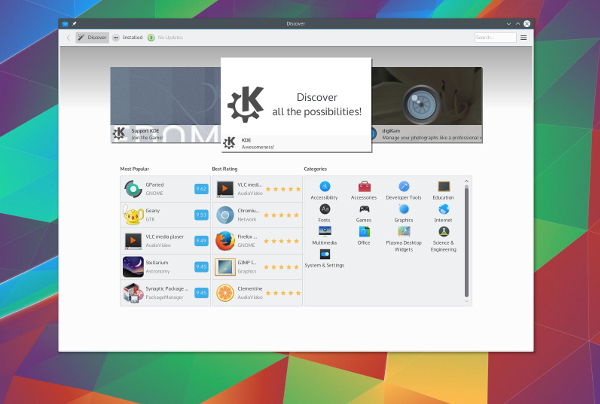Рождение UNIX
В 1969 году Кен Томпсон и Деннис Ритчи начали работу над UNIX. Сначала система была написана на ассемблере, но вскоре была переписана на C — язык программирования, созданный Ритчи и считающийся высокоуровневым.
Создание C++
В 1979 году Bjarne Stroustrup начал разработку языка «Cи с классами», который впоследствии стал C++. По его мнению, это был единственный язык того времени, позволявший создавать программы, сочетающие эффективность и элегантность.
Появление открытого программного обеспечения
В 1984 году Richard Stallman начал разработку GNU (GNU — это не Unix) — полностью свободной операционной системы, основанной на Unix, который тогда был проприетарным.
Ядро Linux
В 1991 году Линус Торвальдс создал ядро Linux, основываясь на MINIX — версии Unix, разработанной Эндрю Таненбаумом. Появление Linux стало поворотным моментом в истории свободного программного обеспечения и способствовало его широкому распространению. См. инфографику «25 лет разработки ядра Linux».
Создание Qt
В 1995 году норвежская компания Troll Tech создала кроссплатформенный набор библиотек Qt, на основе которого в следующем году будет создан KDE. Qt стал основой ключевых технологий KDE на протяжении этих 20 лет. Подробнее см. в истории Qt.
Анонс KDE
В 1996 году Matthias Ettrich объявил о создании Kool Desktop Environment (KDE) — графической оболочки для Unix-систем, разработанной с использованием Qt и C++ и ориентированной на конечного пользователя. Название «KDE» было игрой слов, отсылающей к тогдашней проприетарной графической среде CDE. Ознакомьтесь с оригинальным анонсом проекта KDE.
Конференция KDE One
В 1997 году около 15 разработчиков KDE собрались в Арнсберге, Германия, чтобы поработать над проектом и обсудить его будущее. Это событие получило название KDE One
 Архив, принадлежащий Cornelius Schumacher
Архив, принадлежащий Cornelius SchumacherKDE Beta 1
Бета-версия 1 KDE была выпущена ровно через 12 месяцев после объявления проекта. В тексте релиза подчёркивалось, что KDE — это не просто оконный менеджер, а интегрированная среда, в которой оконный менеджер — лишь одна из частей.
Основание KDE e.V.
В 1997 году в Тюбингене, Германия, была основана организация KDE e.V. — некоммерческое объединение, которое представляет сообщество KDE в финансовых и юридических вопросах.
Создание фонда KDE Free Qt Foundation
Договор о создании Фонда KDE Free Qt Foundation подписан KDE e.V. и Trolltech, тогдашним владельцем Qt. Фонд обеспечивает постоянную доступность Qt как Свободного Программного Обеспечения.
Выпуск KDE 1
В 1998 году KDE выпустила первую стабильную версию своей графической среды, включавшую ключевые компоненты — фреймворк для разработки приложений, KOM/OpenParts и предварительную версию офисного пакета.
Конки
В апреле 1999 года был анонсирован дракон в качестве нового анимированного помощника для Центра помощи KDE. Он оказался настолько обаятельным, что с версии 3.x заменил предыдущего талисмана проекта — Кандалфа. Открыть снимок экрана KDE 2 с Конки и Кандалфом.
Конференция KDE Two
В октябре 1999 года во время второй встречи разработчиков KDE, проходившей в Эрлангене, Германия, обсуждалось будущее развитие проекта. Ознакомиться с отчётом о конференции KDE Two можно на официальной странице.
 Групповое фото (из архива, принадлежащего Cornelius Schumacher)
Групповое фото (из архива, принадлежащего Cornelius Schumacher)Рабочая среда KDE
С выходом бета-версии 1 KDE 2 стало заметно изменение в названии проекта. Ранние релизы, в которых проект назывался «K Desktop Environment», начали использовать более короткое название — «KDE Desktop».
Конференция KDE Three Beta
В июле 2000 года состоялась третья (бета) встреча разработчиков KDE в Трисиле, Норвегия. Узнайте подробности о том, что было сделано на конференции.
 Архив, принадлежащий Cornelius Schumacher
Архив, принадлежащий Cornelius SchumacherВыпуск KDE 2
KDE выпустила вторую версию, главными новшествами которой стали веб-браузер и файловый менеджер Konqueror, а также офисный пакет KOffice. Для этого второго релиза код KDE был практически полностью переписан.
Проект KDE
В анонсе выпуска версии 2.1.2 также отмечено изменение названия проекта. В объявлениях проект стал именоваться «KDE Project» (Проект KDE).
Женщины KDE
В марте 2001 года было объявлено о создании женской группы сообщества. Раздел Женщины KDE был создан с целью увеличить число женщин в сообществах свободного ПО, особенно в KDE. Посмотрите видео «Highlights of KDE Women» с Akademy 2010: ссылка.
Встреча KDE Three
In March 2002, about 25 developers gathered for the third KDE meeting in Nuremberg, Germany. KDE 3 was about to be released and the KDE 2 code needed to be migrated to the new library Qt 3.
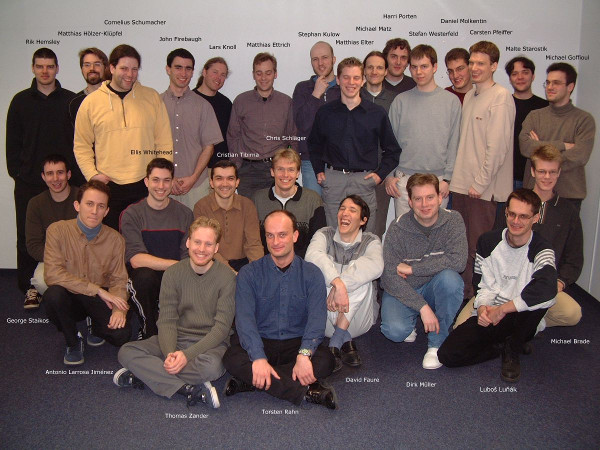 Групповое фото KDE Three
Групповое фото KDE ThreeKDE 3
KDE released its third version, showing as important additions a new print framework, KDEPrint; the translation of the project for 50 languages; and a package of educational applications, maintained by the KDE Edutainment Project.
Встреча KDE e.V.
In August 2002, there was a meeting of board members of the KDE e.V. that was essential to establish how the organization works. At this meeting it was decided, among other things, that the brand "KDE" would be registered and that new members should be invited and supported by two active members of e.V..
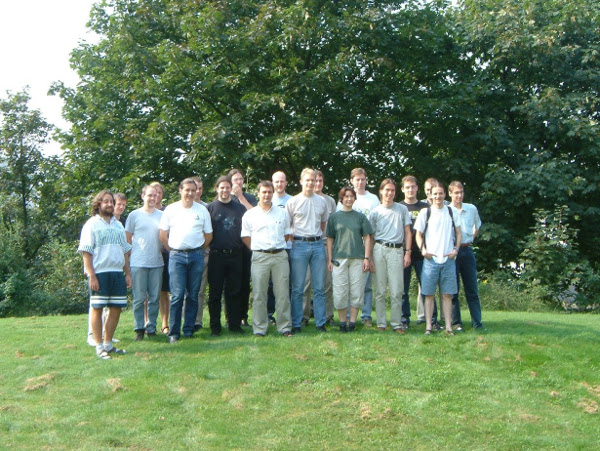 Групповое фото (из архива, принадлежащего Cornelius Schumacher)
Групповое фото (из архива, принадлежащего Cornelius Schumacher)KDE 3.1
In version 3.1 the community presented KDE with a new look, a new theme for widgets, called Keramik, and Crystal as default theme for the icons. See KDE 3.1 New Feature Guide.
Kastle
In August 2003, about 100 contributors of KDE from various countries gathered in a castle in the Czech Republic. The event was called Kastle and was the forerunner of Akademy, the event that would become the international annual meeting of the community.
Akademy 2004
In August 2004, the first international meeting of the community took place. The event was held in Ludwigsburg, Germany, and launched a series of international events called "Akademy" which take place annually since then. The event got its name because it happened in the "Filmakademie" city film school. See the group photos of all Akademies.
KDE 3.5
KDE 3.5 was released. This version introduced several new features, among them, the SuperKaramba, a tool that allowed customize your desktop with "applets"; the Amarok and Kaffeine players; and the media burner K3B. See KDE 3.5: A Visual Guide to New Features.
First Akademy-Es
In March 2006, the first meeting of Spanish KDE contributors took place in Barcelona. Since then, Akademy-Es has turned into an annual event. Learn more about Spanish KDE contributors group.
KDE Four Core meeting
In July 2006, the developers of the KDE core libraries gathered in Trysill, Norway, for the KDE Four Core meeting. The event was a kind of successor to the KDE Beta Three Conference and KDE Three Meeting and in it developers worked on the development of KDE 4 and stabilization of some core libraries to the project.
 Групповое фото (из архива, принадлежащего Cornelius Schumacher)
Групповое фото (из архива, принадлежащего Cornelius Schumacher)Guademy
KDE 4 Alpha 1
In May 2007, the alpha 1 version of KDE 4, codenamed "Knut", was announced. This announcement showed a completely new desktop, with a new theme, Oxygen, new applications like Okular and Dolphin, and a new desktop shell, Plasma. See KDE 4.0 Alpha 1: A Visual Guide to New Features.
KDE 4 Development Platform
In October 2007, KDE announced the release candidate of its development platform consisting of basic libraries and tools to develop KDE applications.
KDE 4
In 2008, the community announced the revolutionary KDE 4. In addition to the visual impact of the new default theme, Oxygen, and the new desktop interface, Plasma; KDE 4 also innovated by presenting the following applications: the PDF reader Okular, the Dolphin file manager, as well as KWin, supporting graphics effects. See KDE 4.0 Visual Guide.
Сообщество KDE
From the announcement of version 4.1 on there was already a tendency to refer to KDE as a "community" and not just as a "project". This change was recognized and affirmed in the rebranding announcement of the following year.
First Camp KDE
In January 2009, the first edition of Camp KDE took place in Negril, Jamaica. It was the first KDE event in the Americas. After that, there were two more US-based conferences, in 2010 in San Diego, and another in 2011 in San Francisco.
Gran Canaria Desktop Summit
In July 2009, the first Desktop Summit, a joint conference of the KDE and Gnome communities, took place in Gran Canaria, Spain. The Akademy 2009 was held with this event.
1 million of commits
The community reached the mark of 1 million of commits. From 500,000 in January 2006 and 750,000 in December 2007, only 19 months later, contributions reached the 1 million mark. The increase in these contributions coincides with the launch of innovative KDE 4.
First Randa Meetings
In September 2009, the first of a series of events known as Randa Meetings took place in Randa, in Swiss Alps. The event brought together several sprints of various community projects. Since then, Randa Meetings take place annually.
Rebranding
In November 2009, the community announced changes to its brand. The name "K Desktop Environment" had become ambiguous and obsolete and is replaced by "KDE". The name "KDE" is no longer just referring to a desktop environment, but now represents both the community and the project umbrella supported by this community.
KDE Software Compilation
From version 4.3.4 on, KDE announcements began to refer to the whole suite of products as 'KDE Software Compilation' (KDE SC). Currently, this trend is abandoned.
Akademy-Br
In April 2010, the first meeting of Brazil KDE contributors took place. The event was held in Salvador, Bahia, and was the only Brazilian Akademy edition. From 2012 on, the event expanded to a meeting for all Latin American contributors.
Включайтесь в игру
In June 2010, the KDE e.V. announced the supporting membership program "Join the Game", which aims to encourage financial support to the community. By participating in the program you become a member of the KDE e.V., contributing to an annual amount and being able participate in the organization's annual meetings.
KDE SC 4.5
In August 2010, the community announced version 4.5 of its products: Development Platform, Applications and Plasma Workspaces. Each of them began to have a separate release announcement. One of the highlights of this version was the Plasma interface for netbooks, announced in version 4.4.
Calligra Suite
In December 2010, the community announces the Calligra Suite, a split from the KOffice suite. KOffice was discontinued in 2011.
First Conf KDE India
In March 2011, the first conference of the KDE and Qt community in India took place in Bengaluru. Since then, the event has taken place annually.
Desktop Summit 2011
In August 2011, another joint conference of the KDE and Gnome communities took place in Berlin, Germany. Nearly 800 contributors from all over the world came together to share ideas and collaborate on various free software projects.
Plasma Active
The community released the first version of its interface for mobile devices, Plasma Active. Later, it was superseded by Plasma Mobile.
First LaKademy
In April 2012, the first meeting of the KDE contributors in Latin America, LaKademy, took place. The event was held in Porto Alegre, Brazil. The second edition took place in 2014 in São Paulo, and since then has been an annual event. So far, all editions were held in Brazil, where the highest number of contributors from the Latin American community is based.
Манифест KDE
KDE Manifesto, a document that presents the benefits and obligations of a KDE project, was released. It also introduces the core values that guide the community: Open Governance, Free Software, Inclusivity, Innovation, Common Ownership, and End-User Focus.
New Konqi
In December 2012, the community launched a competition to create a new mascot using Krita. The competition winner was Tyson Tan, who created new looks for the Konqi and Katie.
Release cycle change
In September 2013, the community announced changes in the release cycle of its products. Each of them, Workspaces, Applications, and Platform, now have separate releases. The change was already a reflection of the restructuring of KDE technologies. This restructuring resulted in the next generation of community products, which would be released the following year.
Frameworks 5
The first stable version of Frameworks 5 (KF5), the successor of KDE Platform 4, was released. This new generation of the KDE libraries based on Qt 5 has made the KDE development platform more modular and facilitated cross-platform development.
Plasma 5
Release of the first stable version of Plasma 5. This new generation of Plasma has a new theme, Breeze. Changes include a migration to a new, fully hardware-accelerated graphics stack centered around an OpenGL(ES) scenegraph. This version of Plasma uses as base the Qt 5 and Frameworks 5.
GCompris joins the KDE
In December 2014, the educational software suite GCompris joins the project incubator of KDE community. Bruno Coudoin, who created the project in 2000, decided to rewrite it in Qt Quick to facilitate its use on mobile platforms. It was originally written in GTK+.
Plasma Mobile
The community announced Plasma Mobile, an interface for smartphones that uses Qt, Frameworks 5 and Plasma Shell technologies.
Plasma on Wayland
The first live image of Plasma running on Wayland was made available for download. Since 2011, the community works in support of Wayland by KWin, the Compositor of Plasma, and the Window Manager.
Plasma 5.5
Version 5.5 is announced with several new features: new icons added to the Breeze theme, support for OpenGL ES in KWin, progress to support Wayland, a new default font (Noto), a new design.
KDE Neon
Akademy 2016 part of QtCon
Akademy 2016 took place as a part of QtCon in September 2016 in Berlin, Germany. The event brought together the Qt, FSFE, VideoLAN and KDE communities. It celebrated 20 years of KDE, 20 years of VLC, and 15 years of FSFE.
Kirigami UI
Kirigami is released, a set of QML components to develop applications based on Qt for mobile or desktop devices.
KDE presents its Vision for the future
In early 2016, as a result of a survey and open discussions among community members, KDE has published a document outlining its vision for the future. This vision represents the values that its members consider most important: "A world in which everyone has control over their digital life and enjoys freedom and privacy." The idea in defining this vision was to make clear what are the main motivations that drive the community.

KDE announced the Advisory Board
In order to formalize the cooperation among the community and the organizations that have been its allies, KDE e.V. announced the Advisory Board. Through the Advisory Board, organizations can provide feedback on community activities and decisions, to participate in regular meetings with KDE e.V., and to attend to Akademy and community sprints.
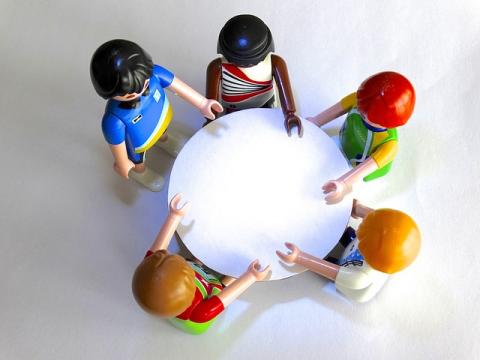
KDE celebrated 20 years
On October 14, KDE celebrated its 20th birthday. The project that started as a desktop environment for Unix systems, today is a community that incubates ideas and projects which go far beyond desktop technologies. To celebrate its anniversary the community published a book written by its contributors. We also had parties been held in eight countries.
 KDE 20 years art by Elias Silveira
KDE 20 years art by Elias SilveiraKDE Slimbook is announced
In partnership with a Spanish laptop retailer the community announced the launch of the KDE Slimbook, a ultrabook that comes with the KDE Plasma and KDE Applications pre-installed. The laptop offers a pre-installed version of KDE Neon and can be purchased from the retailer's website.
 KDE Slimbook
KDE SlimbookQtCon Brasil is announced
Inspired by QtCon 2016, which took place in Berlin and brought together the KDE, VLC, Qt and FSFE communities, KDE community in Brazil hosted QtCon Brasil in 2017. The event was held in São Paulo and brought together Qt experts from Brazil and abroad in two days of talks and one day of training.

KDE set goals
KDE sets its goals for the next four years. As part of an effort undertaken by its members since 2015, the community has defined three main objectives for the coming years: to improve the usability and productivity of its software, to ensure that its software helps to preserve the privacy of users and to facilitate the contribution and integration of new collaborators.

Handshake Foundation donates USD 300,000 to KDE
In 2018, the Handshake Foundation made a donation of USD 300,000 to KDE e.V. The money was used to finance projects, fund the development of Calligra Office Suite and to continue our commitment to keep creating free and open source software for users worldwide.
 Handshake Foundation
Handshake FoundationDebian Joins KDE Advisory Board
Debian, the famous Linux distribution founded in 1993, joined KDE's Advisory Board to further deepen the collaboration between both communities. With this, we expect both communities to grow even stronger and to keep working together to build FLOSS projects.
 Debian Community
Debian CommunityThe Pineapple fund donates USD 200,000 to KDE
Pineapple, an anonymous philanthropic fund, donated USD 200,000 to KDE e.V in 2018. This allowed KDE to keep paying for all the expenses related to our community, such as sprints and events.
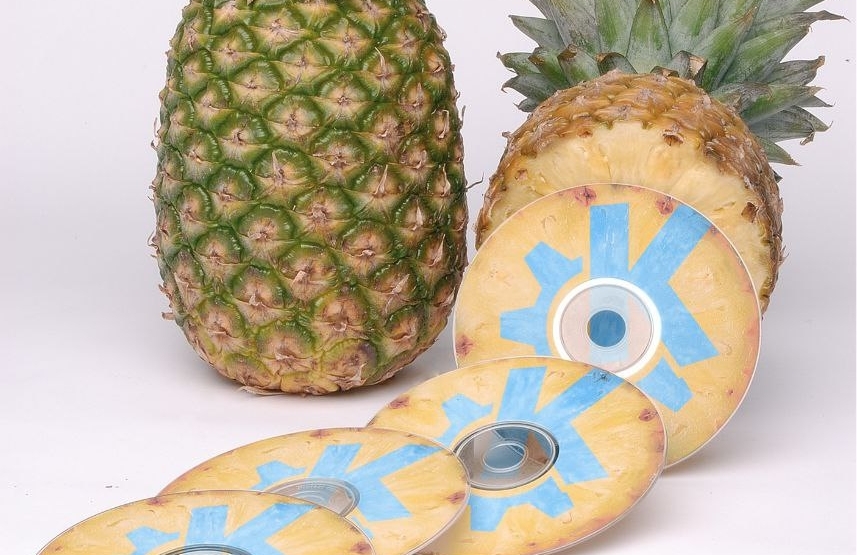 Pineapple Fund
Pineapple FundKDE-powered newspaper achieves world first
The Janayugom daily newspaper becomes the first in the world to switch to a completely free software stack for its publication. The regional paper has 100,000 subscribers across Kerala, India. An event celebrating the move is attended by the state's Chief Minister. Plasma, Okular, Krita, and more are deployed on systems across 14 different offices.
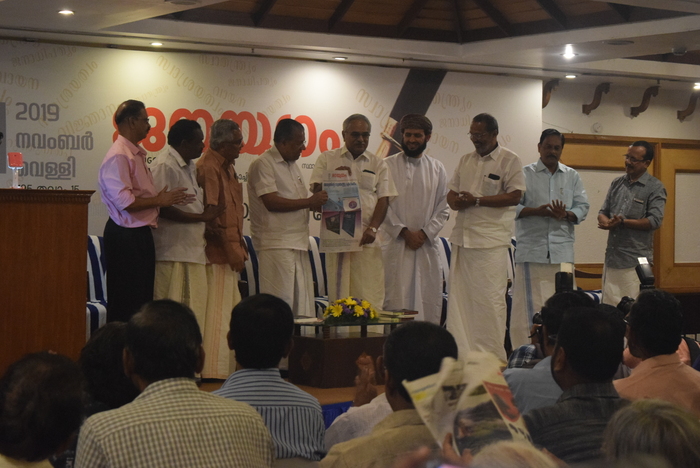
KDE adopts GitLab as an online development platform
In 2019, KDE transitioned to GitLab as our main DevOps platform. This change allowed the KDE community to work more efficiently and to lower the bar for new contributors to join us. Our GitLab instance can be found on KDE Invent.
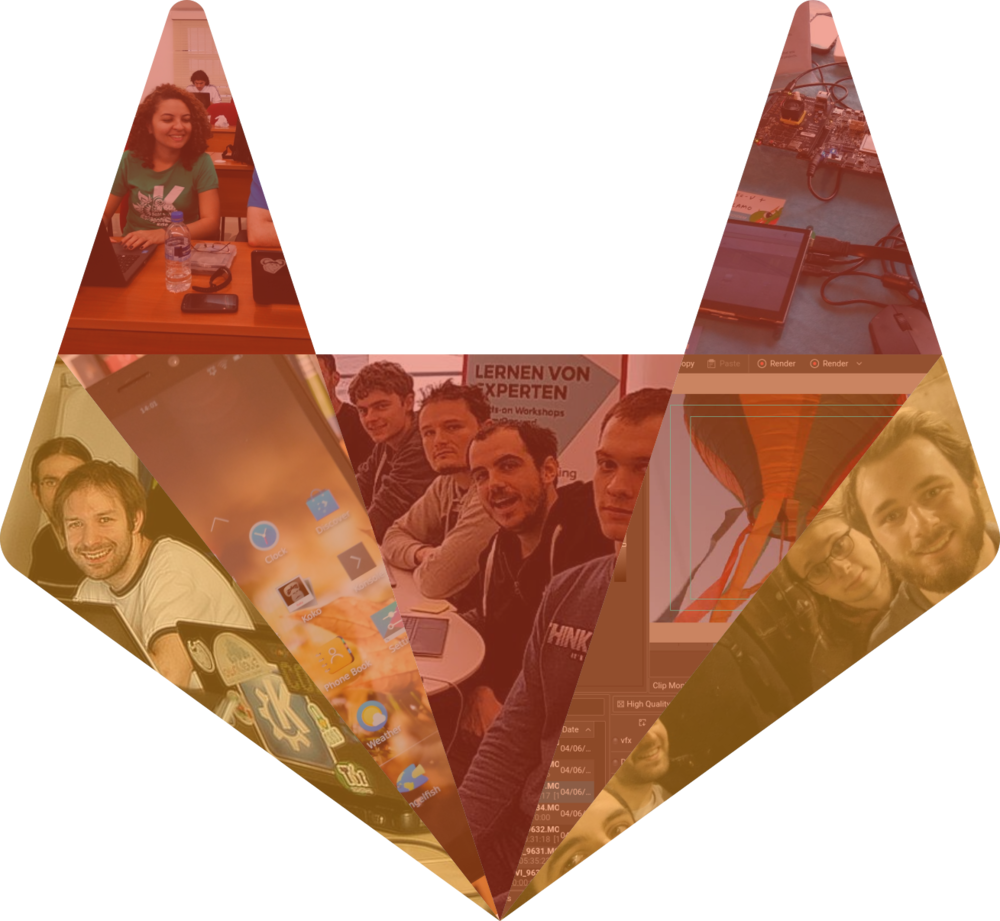 KDE adopts GitLab
KDE adopts GitLabNew goals for 2019
KDE announces a new slate of goals for the near future at Akademy 2019. The community has whittled down a long list of proposals and chose to prioritize a consistent user experience across all KDE software, getting KDE apps into the hands of users with the help of new packaging methods, and improving the Wayland session.

KDE adopts Matrix as an Instant Messaging Platform
Matrix, an Open Source, decentralized and secure Instant Messaging platform, became the default and recommended way of communication for those who like their instant messaging graphical. Matrix allows community members to use a web-based, desktop or mobile clients, as well as native KDE clients, such as Neochat. IRC channels still exist and are bridged to Matrix, ensuring that members using different systems can communicate easily with each other. Likewise Telegram channels, although these are not considered official, as Telegram does not open source the code for its servers or encryption methods.

KDE PinePhone Announced
KDE's Plasma Mobile developers team up with PINE64 to create the PinePhone KDE Community Edition, a mobile phone that runs solely Free Software, is easy to hack and protects your privacy.
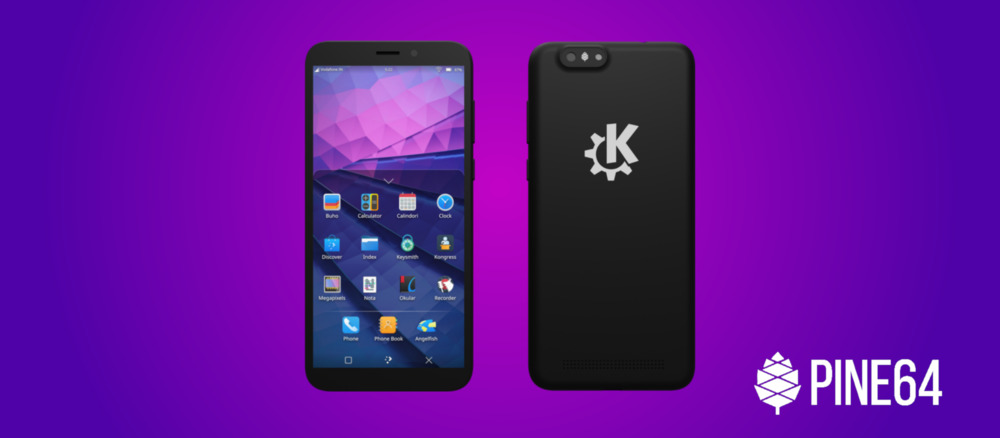 KDE PinePhone
KDE PinePhoneGCompris celebrates its 20th Anniversary and is deployed in thousands of schools in Kerala, India
In 2020 GCompris celebrated its 20th birthday and was also deployed in many schools in Kerala, India. KDE educational applications have been helping students around the world for decades and are part of the KDE Educational Project.
 GCompris in Malayalam
GCompris in MalayalamSlimbook Becomes a KDE Patron
Slimbook, a Linux-focused Spanish computer brand, has joined KDE as a Patron. They have been offering a variety of computers with GNU/Linux and Plasma for years, and continue to support KDE and open source with their contributions.
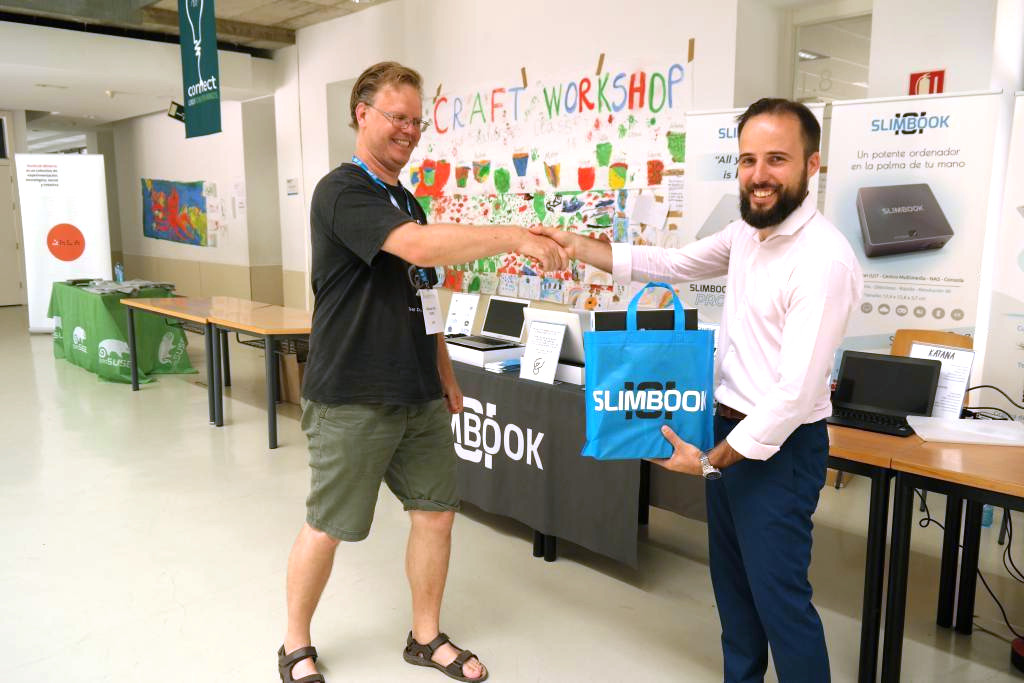 Alejandro López (right), CEO at Slimbook, with Adriaan de Groot from the KDE e.V. board.
Alejandro López (right), CEO at Slimbook, with Adriaan de Groot from the KDE e.V. board.PINE64 joins KDE as a Patron
PINE64 is a company that aims to deliver affordable, high-quality phones and other devices with open source software. PINE64 has become a KDE Patron after years of shipping devices with KDE software.
 PinePhone - KDE Community Edition
PinePhone - KDE Community EditionTUXEDO Computers Becomes a KDE Patron
TUXEDO Computers offers a variety of products with GNU/Linux and KDE Plasma pre-installed. They have been supporting open source software for years and now they have become KDE Patrons.
 Herbert Feiler, CEO of TUXEDO Computers.
Herbert Feiler, CEO of TUXEDO Computers.Valve chooses KDE Plasma for Steam Deck
Valve, the creators of Steam, announced their portable gaming computer called Steam Deck has KDE Plasma as the default desktop experience. KDE developers have been working with Valve to make Plasma work well with Steam Deck.
 KDE Plasma running on Steam Deck
KDE Plasma running on Steam DeckFirst in-person post-Pandemic Akademy held in Barcelona
Akademy 2022 was held in Barcelona from the 1st to the 7th of October. it was the first time in two years Community members and guests laid out in person what had been going on within KDE's projects (and adjacent projects), the state of the art, and where things were headed.
 Attendees to the 2022 Akademy held in Barcelona.
Attendees to the 2022 Akademy held in Barcelona.KDE runs two consecutive fundraisers and completes them both
KDE attempted two new fundraising initiatives in 2022. The first involved raising funds for a specific app: Kdenlive, KDE's video editor. Our goal was to raise €15,000 to enable developers to add much-requested features and stabilize the code. The second initiative was the end-of-year fundraiser, where we aimed to raise €20,000. Both fundraisers were massive successes, surpassing the goals we had set. This achievement stands as a testament to the generosity of community members, supporters, and users.
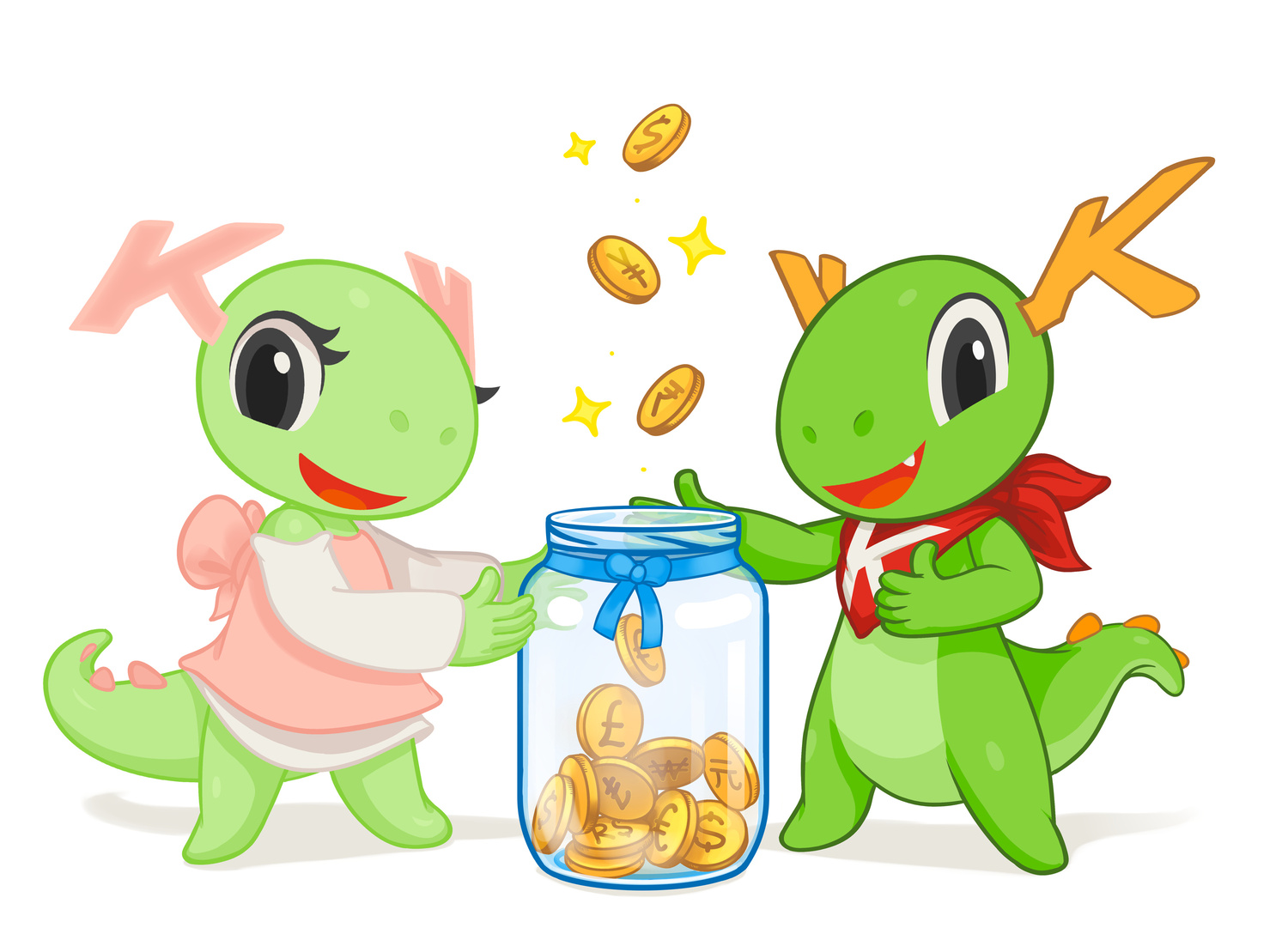 Katie and Konqi thank you for your donation.
Katie and Konqi thank you for your donation.The KDE Free Qt Foundation celebrates its 25th anniversary
The Foundation guarantees the present and future freedom of the Qt framework as it has the right to release Qt under the BSD license if necessary to ensure that Qt remains open source. This remarkable legal guarantee protects the free software community and creates trust among developers, contributors, and customers.
 The KDE Free Qt Foundation helps keep the Qt toolset free.
The KDE Free Qt Foundation helps keep the Qt toolset free.g10 Code Becomes a KDE Patron
g10 Code GmbH joined the ranks of KDE patrons. g10 Code provides custom development, enhancements, and audits of cryptographic software -- in particular for the popular GnuPG encryption and digital signature tools.
 The g10 logo.
The g10 logo.KDE Launches Plasma 6
With Plasma 6, our technology stack underwent two major upgrades: a transition to the latest version of our application framework, Qt, and a migration to the modern Linux graphics platform, Wayland. The launch was dubbed "MegaRelease", as new versions of KDE's apps and Frameworks, along with a new version of Plasma Mobile were all published at the same time.
 The default Plasma 6 desktop environment.
The default Plasma 6 desktop environment.


